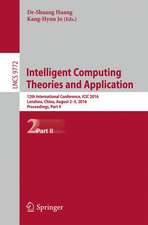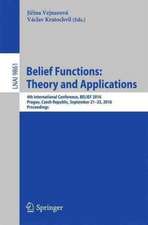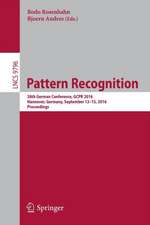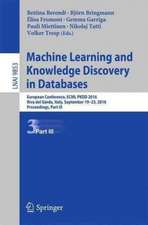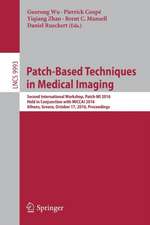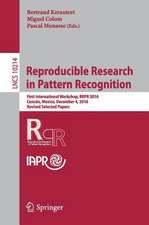Fuzzy Evidence in Identification, Forecasting and Diagnosis: Studies in Fuzziness and Soft Computing, cartea 275
Autor Alexander P. Rotshtein, Hanna B. Rakytyanskaen Limba Engleză Paperback – 22 feb 2014
The book is organised as follows: Chapter 1 presents the basic knowledge about fuzzy sets, genetic algorithms and neural nets necessary for a clear understanding of the rest of this book. Chapter 2 analyzes direct fuzzy inference based on fuzzy if-then rules. Chapter 3 is devoted to the tuning of fuzzy rules for direct inference using genetic algorithms and neural nets. Chapter 4 presents models and algorithms for extracting fuzzy rules from experimental data. Chapter 5 describes a method for solving fuzzy logic equations necessary for the inverse fuzzy inference in diagnostic systems. Chapters 6 and 7 are devoted to inverse fuzzy inference based on fuzzy relations and fuzzy rules. Chapter 8 presents a method for extracting fuzzy relations from data. All the algorithms presented in Chapters 2-8 are validated by computer experiments and illustrated by solving medical and technical forecasting and diagnosis problems. Finally, Chapter 9 includes applications of the proposed methodology in dynamic and inventory control systems, prediction of results of football games, decision making in road accident investigations, project management and reliability analysis.
| Toate formatele și edițiile | Preț | Express |
|---|---|---|
| Paperback (1) | 989.96 lei 6-8 săpt. | |
| Springer Berlin, Heidelberg – 22 feb 2014 | 989.96 lei 6-8 săpt. | |
| Hardback (1) | 994.92 lei 6-8 săpt. | |
| Springer Berlin, Heidelberg – 27 ian 2012 | 994.92 lei 6-8 săpt. |
Din seria Studies in Fuzziness and Soft Computing
- 20%
 Preț: 999.85 lei
Preț: 999.85 lei - 20%
 Preț: 653.06 lei
Preț: 653.06 lei - 20%
 Preț: 872.96 lei
Preț: 872.96 lei - 20%
 Preț: 930.57 lei
Preț: 930.57 lei - 20%
 Preț: 1051.00 lei
Preț: 1051.00 lei - 20%
 Preț: 992.44 lei
Preț: 992.44 lei - 20%
 Preț: 655.85 lei
Preț: 655.85 lei - 20%
 Preț: 1001.86 lei
Preț: 1001.86 lei - 18%
 Preț: 954.14 lei
Preț: 954.14 lei - 20%
 Preț: 330.10 lei
Preț: 330.10 lei - 20%
 Preț: 333.04 lei
Preț: 333.04 lei - 20%
 Preț: 997.56 lei
Preț: 997.56 lei -
 Preț: 391.61 lei
Preț: 391.61 lei - 20%
 Preț: 647.79 lei
Preț: 647.79 lei - 20%
 Preț: 986.01 lei
Preț: 986.01 lei - 18%
 Preț: 958.56 lei
Preț: 958.56 lei - 20%
 Preț: 996.40 lei
Preț: 996.40 lei - 20%
 Preț: 999.35 lei
Preț: 999.35 lei - 15%
 Preț: 646.43 lei
Preț: 646.43 lei - 20%
 Preț: 651.57 lei
Preț: 651.57 lei - 20%
 Preț: 997.89 lei
Preț: 997.89 lei - 15%
 Preț: 641.03 lei
Preț: 641.03 lei - 20%
 Preț: 1009.74 lei
Preț: 1009.74 lei - 20%
 Preț: 992.62 lei
Preț: 992.62 lei -
 Preț: 388.72 lei
Preț: 388.72 lei - 18%
 Preț: 1223.43 lei
Preț: 1223.43 lei - 20%
 Preț: 651.42 lei
Preț: 651.42 lei - 18%
 Preț: 951.59 lei
Preț: 951.59 lei - 18%
 Preț: 948.61 lei
Preț: 948.61 lei
Preț: 989.96 lei
Preț vechi: 1237.46 lei
-20% Nou
Puncte Express: 1485
Preț estimativ în valută:
189.45€ • 196.59$ • 158.35£
189.45€ • 196.59$ • 158.35£
Carte tipărită la comandă
Livrare economică 17-31 martie
Preluare comenzi: 021 569.72.76
Specificații
ISBN-13: 9783642444210
ISBN-10: 3642444210
Pagini: 328
Ilustrații: XIV, 313 p.
Dimensiuni: 155 x 235 x 17 mm
Greutate: 0.5 kg
Ediția:2012
Editura: Springer Berlin, Heidelberg
Colecția Springer
Seria Studies in Fuzziness and Soft Computing
Locul publicării:Berlin, Heidelberg, Germany
ISBN-10: 3642444210
Pagini: 328
Ilustrații: XIV, 313 p.
Dimensiuni: 155 x 235 x 17 mm
Greutate: 0.5 kg
Ediția:2012
Editura: Springer Berlin, Heidelberg
Colecția Springer
Seria Studies in Fuzziness and Soft Computing
Locul publicării:Berlin, Heidelberg, Germany
Public țintă
ResearchCuprins
Preface.- Fundamentals of intellectual technologies.- Direct inference based on fuzzy rules.- Fuzzy rules tuning for direct inference.- Fuzzy rules extraction from experimental data.- Inverse inference based on fuzzy relational equations.- Inverse inference with fuzzy relations tuning.- Inverse inference based on fuzzy rules.- Fuzzy relations extraction from experimental data.- Applied fuzzy systems.
Textul de pe ultima copertă
The purpose of this book is to present a methodology for designing and tuning fuzzy expert systems in order to identify nonlinear objects; that is, to build input-output models using expert and experimental information. The results of these identifications are used for direct and inverse fuzzy evidence in forecasting and diagnosis problem solving.
The book is organised as follows: Chapter 1 presents the basic knowledge about fuzzy sets, genetic algorithms and neural nets necessary for a clear understanding of the rest of this book. Chapter 2 analyzes direct fuzzy inference based on fuzzy if-then rules. Chapter 3 is devoted to the tuning of fuzzy rules for direct inference using genetic algorithms and neural nets. Chapter 4 presents models and algorithms for extracting fuzzy rules from experimental data. Chapter 5 describes a method for solving fuzzy logic equations necessary for the inverse fuzzy inference in diagnostic systems. Chapters 6 and 7 are devoted to inverse fuzzy inference based on fuzzy relations and fuzzy rules. Chapter 8 presents a method for extracting fuzzy relations from data. All the algorithms presented in Chapters 2-8 are validated by computer experiments and illustrated by solving medical and technical forecasting and diagnosis problems. Finally, Chapter 9 includes applications of the proposed methodology in dynamic and inventory control systems, prediction of results of football games, decision making in road accident investigations, project management and reliability analysis.
The book is organised as follows: Chapter 1 presents the basic knowledge about fuzzy sets, genetic algorithms and neural nets necessary for a clear understanding of the rest of this book. Chapter 2 analyzes direct fuzzy inference based on fuzzy if-then rules. Chapter 3 is devoted to the tuning of fuzzy rules for direct inference using genetic algorithms and neural nets. Chapter 4 presents models and algorithms for extracting fuzzy rules from experimental data. Chapter 5 describes a method for solving fuzzy logic equations necessary for the inverse fuzzy inference in diagnostic systems. Chapters 6 and 7 are devoted to inverse fuzzy inference based on fuzzy relations and fuzzy rules. Chapter 8 presents a method for extracting fuzzy relations from data. All the algorithms presented in Chapters 2-8 are validated by computer experiments and illustrated by solving medical and technical forecasting and diagnosis problems. Finally, Chapter 9 includes applications of the proposed methodology in dynamic and inventory control systems, prediction of results of football games, decision making in road accident investigations, project management and reliability analysis.
Caracteristici
Original research devoted to the resolution of the direct and inverse problems of fuzzy inference with the use of genetic and neural algorithms They described a model to solve inverse problems of fuzzy inference and present some applications of this model Written by leading experts in the field



